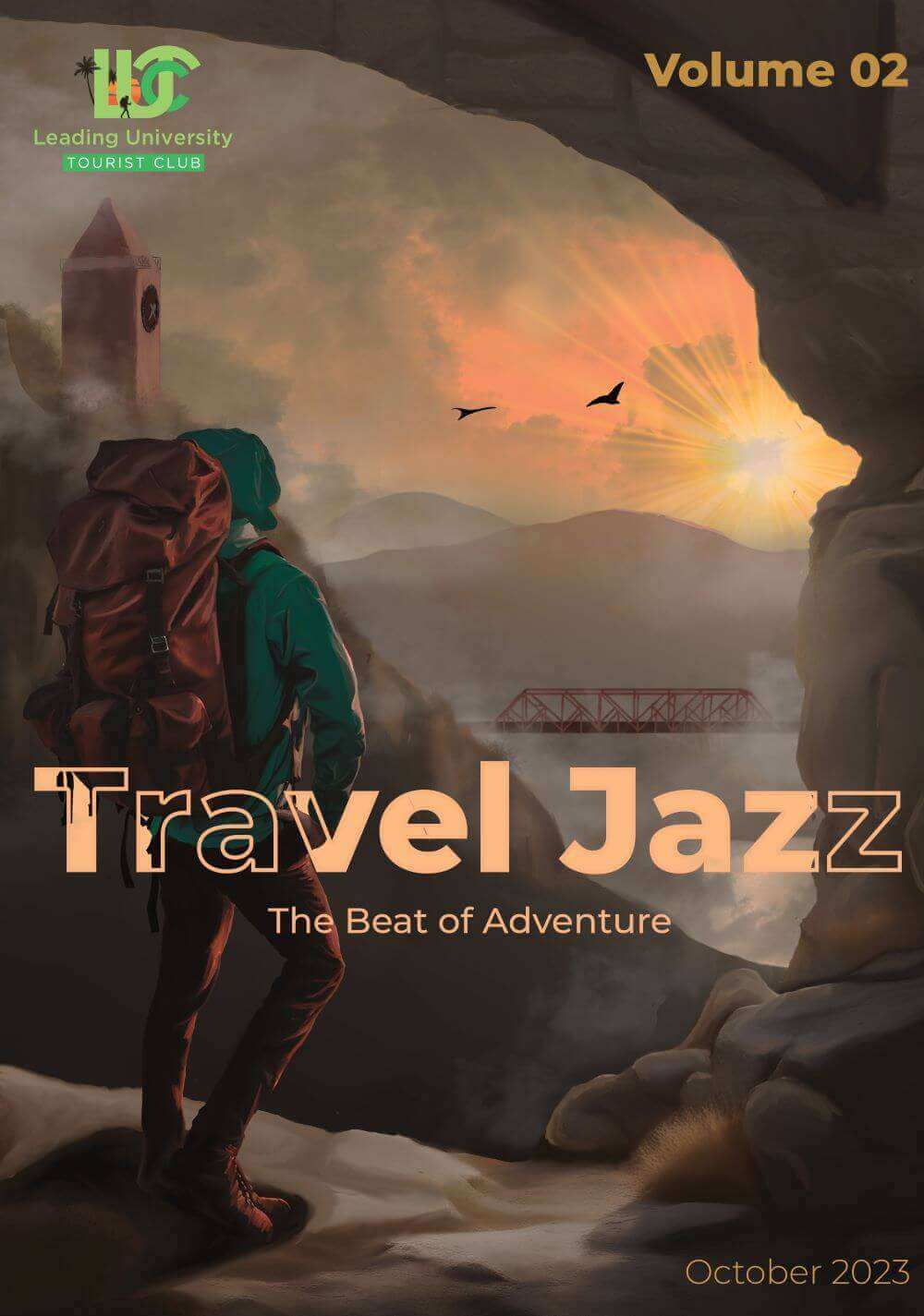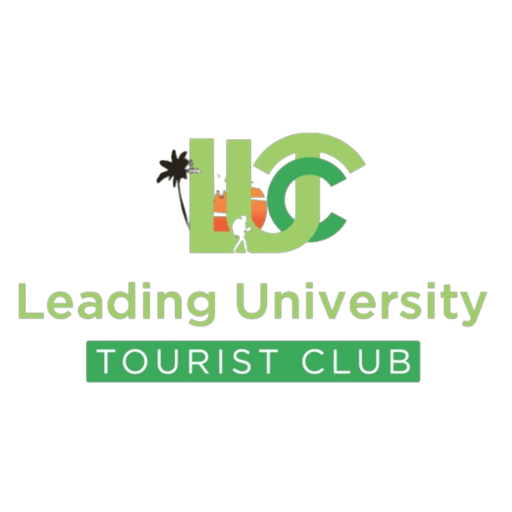‘Education is a lifelong journey whose destination expands as you travel’
– Jim Stovall
Introduction.
Tourism is the single largest industry in the world. Tourism and hospitality industry generate 10% of total employment in the world. Bangladesh, being one of the most hospitable countries in the world had all the potentials to become one of the top desired tourism destinations in the world. Unfortunately, we failed to do justice to the tourism resources that we are naturally gifted and inherited. In addition to natural resources, we have another potential resource for Tourism and Hospitality Management (THM) i.e., our hospitable and enthusiastic youths. If we can impart practical training to them according to requirements of the tourism industry, they can become our industry ambassadors to foreign countries as well as source of foreign remittance. In tourism properties, the employees always have to deal with numerous guests from all over the globe having diverse social, cultural, religious and ethnic backgrounds. One of the fields that our students lack most, is their knowledge on Cross-cultural issues in THM industry. So, training on Cross-cultural issues to the potential employees is a must. Fortunately, few universities and institutions have taken good initiative to train the students on Cross-cultural issues.
Basic Idea of Culture and Cross-Cultural Issues.
The term ‘culture’ means ‘way of life of a group of people. It is the cumulative deposit of knowledge, beliefs, values, symbols, traditions and behavior that they accept, practice and pass from one generation to the next’ (Samovar and Porter). On the other hand, ‘Cross-Culture’ is a concept that recognizes the differences among the people of different cultures, nations, backgrounds, ethnicities, and the importance of bridging them’ (Carol M. Kopp). The tourism professionals must have comprehensive training to be able to handle the guests in the most befitting manner so that the guests always feel at home and remain in happy mood. In the tourism properties/destinations, the managers and all executives should have good understanding on the elements of culture such as languages, religions, symbols, norms, values, ideologies, rituals ect. Knowledge on these elements is also required for tourists to make their trip enjoyable and responsible by showing respect to others’ culture.
Historical Perspectives of Cross-Cultural Issues
Arguably, human migration started form Africa few millenniums ago. Slowly and gradually, they started travelling all over the world and established various civilizations. Few worth mentioning civilizations are: Sumerian Civilization (4500-1900 BC), Indus Civilization (3300-1300 BC), Egyptian Civilization (3100-30 BC), Chinese Civilization (2070 BC-220 AD), Maya Civilization (1000 BC – 1520 AD) and so on. These civilizations are the cradles of human cultures, languages, religions and social norms. Therefore, to be good host, tourism professionals must have fair knowledge about civilizations. Beside this, they should also have knowledge on various empires like – Persian Empire, Roman Empire, Han Empire, Umayyad Khalifate, Mongol Empire, Ottoman Empire and so on. Above are the events that shaped the cultural history of the world. Knowledge on these historical empires will help the tourism professionals to understand religious and cultural molding of the world. A training curriculum should also include modern global issues like European renaissance, industrial revelation, colonization, WW-I &II, emancipation of many new countries and other contemporary issues including 9/11. The essence of Cross-Cultural issues in tourism are imbibed with social, religious and political happenings. Fundamental knowledge on these historical influences will enable students of tourism (& travelers) about the existing cultural conflicts, challenges and opportunities in this world.
Various Forms of Cultural Activities.
The culture is expressed, demonstrated and manifested in various ways and means. For example, ‘art’ is a very strong form of cultural manifestation. There are three kinds of art – Visual arts, Literary Arts and Performing Arts. The Visual Art are the creative skills whose products are to be appreciated by sights e.g., painting, drawing, artifacts, crafts, sculpting, filmmaking, photography, architecture, etc. Literary Arts are something in the form of writings or stories having artistic and cultural value that displays beauty, style, theme, characterization e.g., fiction, drama, poetry, prose, novels etc. And finally, the Performing arts are creative arts that are performed by individuals or group in front of a live audience, such as music, dance, drama etc. In addition, festival, gastronomy, entertainment, celebration, games etc. can be considered as cultural activities. The tourism professions should have basic knowledge on different cultural activities across the globe. An organized and comprehensive training module should be arranged for our potential tourism professions to create cultural awareness & respect so that they can provide services to the tourists according to their cultural backgrounds and traditional heritages.
Culture Shock and Cultural Multiplicity.
A tourism professional in the industry must understand the psyche of tourists in terms of their liking, disliking, need, difficulties etc. Therefore, they must have fair knowledge on ‘Culture Shock’. The concept of “culture shock” is attributed to the renowned anthropologist Mr. Oberg. Culture shock refers to feelings of uncertainty, confusion, anxiety or even excitement that people may experience when moving to a new country or experiencing new culture or surroundings. To deal with Culture Shock, he (Oberg) came up with a concept called ‘acculturation’. It means a process in which an individual adopts & adjust to new cultural environment. It has four stages – honeymoon state, uncertainty state, adaptation state and acceptance state. Our students should be trained on this kind of special issues to make them competent executives / managers in global hospitality industry. The tourism educators should encourage and inspire students to be able to think global. Students should be facilitated to get exposure to the beauty of cultural multiplicity. They should be trained on tolerance and international brotherhood in this world of cultural diversity by removing taboo and misconceptions.
Intangible Cultural Heritage (ICH) and World Heritage Sites (WHS)
According to Wikipedia, ‘Intangible Cultural Heritage (ICH) is a practice, representation, expression, knowledge or skill considered by UNESCO to be part of a place’s cultural heritage’. Examples of intangible heritage are oral traditions, performing arts, local knowledge and traditional skills. The traditional art of Jamdani weaving (Bangladesh), Tango Dance (Argentina & Uruguay), Falconry (UAE), Zaouli (Ivory Coast), Alpinism (Italy), Flamenco (Spain), Silat (Malaysia), Manas (China) ect are few examples of ICH. In addition to intangible cultural heritage, the UNESCO is also determined to protect the tangible ‘World Heritage Sites (WHS)’ that have ‘outstanding universal value and importance for future generations.’ Historic Sixty Dome Mosque (Bangladesh), Babylon (Iraq), Angkor Wat (Cambodia), Timbuktu (Mali), Agra Fort (India), Ha Long Bay (Vietnam), Moenjodaro (Pakistan), Cordoba (Spain), Lumbini (Nepal), Machu Picchu (Peru), Bagan (Myanmar), Sundarbans (Bangladesh) etc are few of the WHS. All THM students should also have fair ideas about Geographical Indication (GI) products administered and promoted by World Intellectual Property Organization (WIPO). Such knowledge will help them in diving into globalization and grow efficiency to develop glocalization in hospitality. The education on such important issues of global cultural and natural valuable assets will make our students knowledgeable and prepare them to be skilled tourism professionals to take responsibilities and leadership in the diverse world of tourism industry. They will also turn into responsible stakeholders having concern about sustainable tourism.
Cross-cultural Communication and Management
Renowned American anthropologist Edward T. Hall said, ‘’culture is communication, communication is culture’’. Our students of THM today are the prospective ‘movers and shakers’ of the tourism industry in the days to come. In a multinational global platform, they have to communicate with people from multi-cultural backgrounds. Therefore, they are to master the cross-cultural communications for efficient and effective relation building with diverse tourists and in own workplace. They should have adaptability to make effectual collaborations for business growth. In the era of globalization, the world is turning to a single global village. Hence, the tourism properties and destinations increasingly employing people from different countries. In this market scenario, the Cross-cultural management has become very important in business entities, especially in tourism sector. Managers must understand the cultural diversity of the guests in terms of their gender, ethnicity, race, education, generation, sextual orientations, disabilities and so on. Therefore, our tourism institutions / universities should include courses on Cross-cultural issues in their curricula.
Conclusion
With the wonderful natural beauty, cultural heritage and hospitable people, Bangladesh could have been tourists’ paradise. But unfortunately, yet we couldn’t utilize our potentials to attract in-bound tourists. Nevertheless, in the recent days we noticed remarkable enthusiasm amongst youths to study tourism. Various universities and institutions took positive initiatives to offer degrees on tourism and hospitality management (THM). Leading University, Sylhet is probably the pioneer to show prudence to incorporate topic like ‘Cross-Cultural Issues’ in their curricula. Such smart inclusion of contemporary subject will make our graduates effective executives, efficient managers and visionary planners in the local and global tourism sectors. To spread and enhance this idea, other universities should introduce such modern and demanding topics in their THM programs. Courses should be practical orientated to meet the global market demand. Students should have opportunity to visit tourism properties, destinations organizations (in home and abroad) to gain practical orientation, knowledge and experience. Our national strategy for tourism development must give appropriate importance on development for skilled manpower for both domestic and international tourism sectors. It is high time for us to grab our segment of the pie in the global tourism market.










